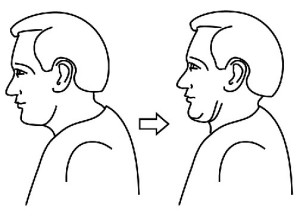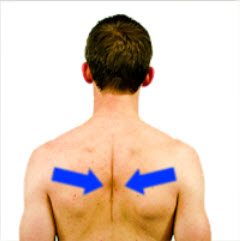
Do you have neck, shoulder, jaw, or back pain related to your job or work place environment? Many musculoskeletal disorders are due to poor biomechanics during tasks such as lifting, overhead reaching, pushing or pulling, and/or working in awkward body positions while performing repetitive tasks. Work-related musculoskeletal disorders are among the most frequently reported causes of lost or restricted work time. According to the Bureau of Labor Statistics, in 2013 non-traumatic musculoskeletal disorder cases accounted for 33% of all worker injury and illness cases.
How do you prevent musculoskeletal disorder in the workplace?
Many companies provide ergonomic assessments in the workplace and might also provide adjustments such as a high-low or standing desks. Our bodies function best when we move frequently, and so remaining in a static position for long periods of time can often cause aches and pains, as well as chronic postural issues. If you have the option of a high low desk, it is best to switch from sitting to standing every 20-30 minutes. If a high low desk is not an option for you, then try to instill the ‘20-20-20 rule’. This ‘rule’ is to get up every 20 minutes and look 20 feet away from you for 20 seconds. Although a walk to the water cooler would be better for movement, the 20-20-20 routine is a quick way to allow your body to change positions without distracting from your work for too long. Because it is difficult to remember to change positions every 20 minutes, setting a timer is a good way to prompt you to change positions. Another way to ward off musculoskeletal disorders is to intermittently perform 5-10 repetitions of one or two simple exercises to maintain healthy blood flow and to condition some of your postural muscles. Here are a couple of activities that you can readily do at your desk:
Postural Exercises:
Chin tucks (cervical retraction): The majority of people (especially those who work at a desk all day) have a forward head posture, meaning that their neck juts forward in relation to the rest of the spine. This positions the head out in front of a vertical axis, which can subsequently cause neck, shoulder, jaw, or upper back problems. Proper head position is to maintain your ears directly over your shoulders. Perform this exercise to encourage neutral neck posture by tucking your chin inward and pulling yourself up as if there is a rope pulling the back of your head upward. Hold this position for 5-10 seconds. Then relax and repeat. Try not to let the neck jut too far forward during the rest phase of this activity. The goal would be to become accustomed to a more vertical alignment of the spine, such that having the ears over the shoulders is a natural rest position.

Shoulder blade squeezes (scapular retraction): A gain, the majority of individuals with a desk job often have weak scapular stabilizing muscles, causing forward rounded shoulders. Sustained forward rounded shoulder positions can also cause subsequent neck, shoulder, jaw, or upper back problems. To perform this exercise squeeze your shoulder blades together – opening up the front of the chest. Hold the retracted position for 5-10 seconds at a time. As in the chin tuck exercise, try not to let your shoulders go back to a significantly rounded position between repetitions.

Basic Ergonomic Work Station Evaluation:
Work station set-up and utilization of available resources can be vital components to optimizing your function and long term health when it comes to a stationary work environment. Here are some “quick checks” to make sure you are set-up for success at your desk:
- Your computer monitor should be at eye level and positioned directly in front of your chair.
- Set your chair height to allow for an approximate 90-degree angled position of hips and knees. Feet should be able to be placed flat on the floor.
- Your chair should provide lumbar support and encourage upright seated posture rather than slumping. Ideally, pick a chair that has adjustable angles for both the back and the seat platform.
- Your work surface or keyboard should be positioned to allow for forearm support while also letting the shoulders be relaxed. Elbows should be bent at 90 degrees and wrists should be in neutral positioning (very slightly ‘cocked up’ so that the fingers automatically rest in a rounded position).
- Consider utilizing a headset for frequent telephone usage rather than cradling the receiver between the neck and shoulder.
- Shift positions frequently and take a minimum of one standing break every hour.
Are these tips and tricks not quite enough to ease the aches and pains that you experience at the workplace or elsewhere? Then consider seeking further biomechanical assessment. Be aware that it is typically much easier to eliminate minor posture-related pain than to treat chronically irritated, overworked posture systems. Your physical therapist can help you to optimize your particular work station and address your individual postural issues. Physical therapists can also make recommendations to your company about equipment and/or work place modifications that would be appropriate for your specific body type and work demands.
